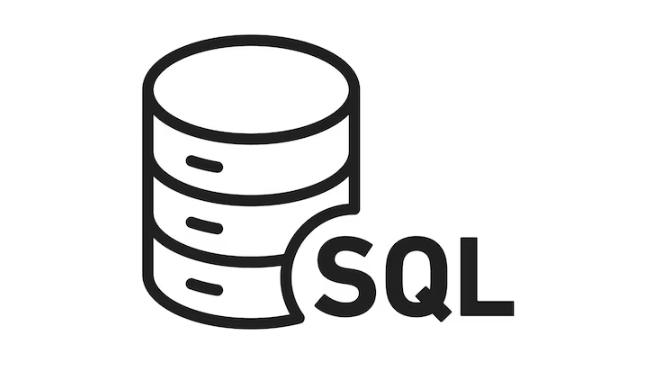What is a sequence object in SQL and how is it used?
A sequence object in SQL generates a sequence of numeric values based on specified rules, commonly used for unique number generation across sessions and tables. 1. It allows defining integers that increment or decrement by a set amount. 2. Unlike identity columns, sequences are standalone and usable across multiple tables. 3. Key properties include start value, increment, min/max bounds, and cycle option. 4. Created via the CREATE SEQUENCE statement, sequences retrieve next values using NEXT VALUE FOR. 5. Sequences are ideal for cross-table counters, pre-insert value knowledge, programmatic resets, and complex systems. 6. Identity columns suit single-table simplicity and local auto-numbering. 7. Sequences may skip numbers due to rollbacks or failures. 8. Not all databases support sequences natively, requiring workarounds.

A sequence object in SQL is a database object that generates a sequence of numeric values according to specified rules. It's commonly used to automatically generate unique numbers, such as primary key values, across multiple sessions and tables.

What Does a Sequence Object Do?
At its core, a sequence object lets you define a series of integers that can be incremented or decremented by a set amount. Unlike identity columns (which auto-increment within a single table), sequences are standalone objects — meaning they can be used across multiple tables or even in different parts of your application logic.

For example:
- You might use a sequence to generate invoice numbers that need to follow a specific format across several tables.
- Or assign ticket IDs in a support system where the same ID sequence must be referenced in more than one place.
Key properties you define when creating a sequence include:

- Start value – Where the sequence begins
- Increment – Whether it increases or decreases and by how much
- Minimum/Maximum value – Bounds for the sequence
- Cycle option – Whether it should restart after reaching min/max
How to Create and Use a Sequence in SQL
Creating a sequence is straightforward using the CREATE SEQUENCE statement. Here’s a basic example:
CREATE SEQUENCE customer_id_seq
START WITH 100
INCREMENT BY 1;Once created, you can retrieve the next value from the sequence using the NEXT VALUE FOR clause:
INSERT INTO customers (id, name) VALUES (NEXT VALUE FOR customer_id_seq, 'Jane Doe');
You’re not limited to inserts — you can also select the next value directly:
SELECT NEXT VALUE FOR customer_id_seq AS next_id;
This flexibility makes sequences useful beyond just primary keys, like generating temporary identifiers or audit logs with consistent numbering.
When Should You Use a Sequence Instead of an Identity Column?
While both sequences and identity columns generate unique numbers, there are clear use cases where one is better than the other.
Use a sequence when:
- You need the same counter across multiple tables
- You want to know the next value before inserting (e.g., for logging or validation)
- You need to reset or reseed the number generator programmatically
- You're working in environments with complex data models or distributed systems
Use an identity column when:
- The auto-numbering is strictly local to one table
- Simplicity matters and you don’t need cross-table coordination
- You don't need to pre-fetch the next value
In many cases, especially in large applications or data warehouses, sequences offer more control and flexibility.
A Few Things to Watch Out For
Sequences are powerful, but they come with a few gotchas:
- They don’t guarantee gap-free sequences. If a transaction rolls back or a session fails, some numbers may be skipped.
- In high-concurrency environments, make sure your sequence settings match your performance and scalability needs.
- Not all databases support sequences — MySQL, for example, doesn’t have them natively (you simulate similar behavior with workarounds).
Also, if you're migrating or replicating data, remember to carry over sequence definitions and current values so you don’t end up with conflicts.
That's basically how sequence objects work in SQL — they're flexible tools for generating ordered numbers outside the scope of individual tables.
The above is the detailed content of What is a sequence object in SQL and how is it used?. For more information, please follow other related articles on the PHP Chinese website!

Hot AI Tools

Undress AI Tool
Undress images for free

Undresser.AI Undress
AI-powered app for creating realistic nude photos

AI Clothes Remover
Online AI tool for removing clothes from photos.

Clothoff.io
AI clothes remover

Video Face Swap
Swap faces in any video effortlessly with our completely free AI face swap tool!

Hot Article

Hot Tools

Notepad++7.3.1
Easy-to-use and free code editor

SublimeText3 Chinese version
Chinese version, very easy to use

Zend Studio 13.0.1
Powerful PHP integrated development environment

Dreamweaver CS6
Visual web development tools

SublimeText3 Mac version
God-level code editing software (SublimeText3)

Hot Topics
 How to use IF/ELSE logic in a SQL SELECT statement?
Jul 02, 2025 am 01:25 AM
How to use IF/ELSE logic in a SQL SELECT statement?
Jul 02, 2025 am 01:25 AM
IF/ELSE logic is mainly implemented in SQL's SELECT statements. 1. The CASEWHEN structure can return different values according to the conditions, such as marking Low/Medium/High according to the salary interval; 2. MySQL provides the IF() function for simple choice of two to judge, such as whether the mark meets the bonus qualification; 3. CASE can combine Boolean expressions to process multiple condition combinations, such as judging the "high-salary and young" employee category; overall, CASE is more flexible and suitable for complex logic, while IF is suitable for simplified writing.
 How to create a temporary table in SQL?
Jul 02, 2025 am 01:21 AM
How to create a temporary table in SQL?
Jul 02, 2025 am 01:21 AM
Create temporary tables in SQL for storing intermediate result sets. The basic method is to use the CREATETEMPORARYTABLE statement. There are differences in details in different database systems; 1. Basic syntax: Most databases use CREATETEMPORARYTABLEtemp_table (field definition), while SQLServer uses # to represent temporary tables; 2. Generate temporary tables from existing data: structures and data can be copied directly through CREATETEMPORARYTABLEAS or SELECTINTO; 3. Notes include the scope of action is limited to the current session, rename processing mechanism, performance overhead and behavior differences in transactions. At the same time, indexes can be added to temporary tables to optimize
 How to get the current date and time in SQL?
Jul 02, 2025 am 01:16 AM
How to get the current date and time in SQL?
Jul 02, 2025 am 01:16 AM
The method of obtaining the current date and time in SQL varies from database system. The common methods are as follows: 1. MySQL and MariaDB use NOW() or CURRENT_TIMESTAMP, which can be used to query, insert and set default values; 2. PostgreSQL uses NOW(), which can also use CURRENT_TIMESTAMP or type conversion to remove time zones; 3. SQLServer uses GETDATE() or SYSDATETIME(), which supports insert and default value settings; 4. Oracle uses SYSDATE or SYSTIMESTAMP, and pay attention to date format conversion. Mastering these functions allows you to flexibly process time correlations in different databases
 What is the purpose of the DISTINCT keyword in a SQL query?
Jul 02, 2025 am 01:25 AM
What is the purpose of the DISTINCT keyword in a SQL query?
Jul 02, 2025 am 01:25 AM
The DISTINCT keyword is used in SQL to remove duplicate rows in query results. Its core function is to ensure that each row of data returned is unique and is suitable for obtaining a list of unique values for a single column or multiple columns, such as department, status or name. When using it, please note that DISTINCT acts on the entire row rather than a single column, and when used in combination with multiple columns, it returns a unique combination of all columns. The basic syntax is SELECTDISTINCTcolumn_nameFROMtable_name, which can be applied to single column or multiple column queries. Pay attention to its performance impact when using it, especially on large data sets that require sorting or hashing operations. Common misunderstandings include the mistaken belief that DISTINCT is only used for single columns and abused in scenarios where there is no need to deduplicate D
 What is the difference between WHERE and HAVING clauses in SQL?
Jul 03, 2025 am 01:58 AM
What is the difference between WHERE and HAVING clauses in SQL?
Jul 03, 2025 am 01:58 AM
The main difference between WHERE and HAVING is the filtering timing: 1. WHERE filters rows before grouping, acting on the original data, and cannot use the aggregate function; 2. HAVING filters the results after grouping, and acting on the aggregated data, and can use the aggregate function. For example, when using WHERE to screen high-paying employees in the query, then group statistics, and then use HAVING to screen departments with an average salary of more than 60,000, the order of the two cannot be changed. WHERE always executes first to ensure that only rows that meet the conditions participate in the grouping, and HAVING further filters the final output based on the grouping results.
 Defining Database Schemas with SQL CREATE TABLE Statements
Jul 05, 2025 am 01:55 AM
Defining Database Schemas with SQL CREATE TABLE Statements
Jul 05, 2025 am 01:55 AM
In database design, use the CREATETABLE statement to define table structures and constraints to ensure data integrity. 1. Each table needs to specify the field, data type and primary key, such as user_idINTPRIMARYKEY; 2. Add NOTNULL, UNIQUE, DEFAULT and other constraints to improve data consistency, such as emailVARCHAR(255)NOTNULLUNIQUE; 3. Use FOREIGNKEY to establish the relationship between tables, such as orders table references the primary key of the users table through user_id.
 What is a sequence object in SQL and how is it used?
Jul 02, 2025 am 01:21 AM
What is a sequence object in SQL and how is it used?
Jul 02, 2025 am 01:21 AM
AsequenceobjectinSQLgeneratesasequenceofnumericvaluesbasedonspecifiedrules,commonlyusedforuniquenumbergenerationacrosssessionsandtables.1.Itallowsdefiningintegersthatincrementordecrementbyasetamount.2.Unlikeidentitycolumns,sequencesarestandaloneandus
 Key Differences Between SQL Functions and Stored Procedures.
Jul 05, 2025 am 01:38 AM
Key Differences Between SQL Functions and Stored Procedures.
Jul 05, 2025 am 01:38 AM
SQLfunctionsandstoredproceduresdifferinpurpose,returnbehavior,callingcontext,andsecurity.1.Functionsreturnasinglevalueortableandareusedforcomputationswithinqueries,whileproceduresperformcomplexoperationsanddatamodifications.2.Functionsmustreturnavalu







